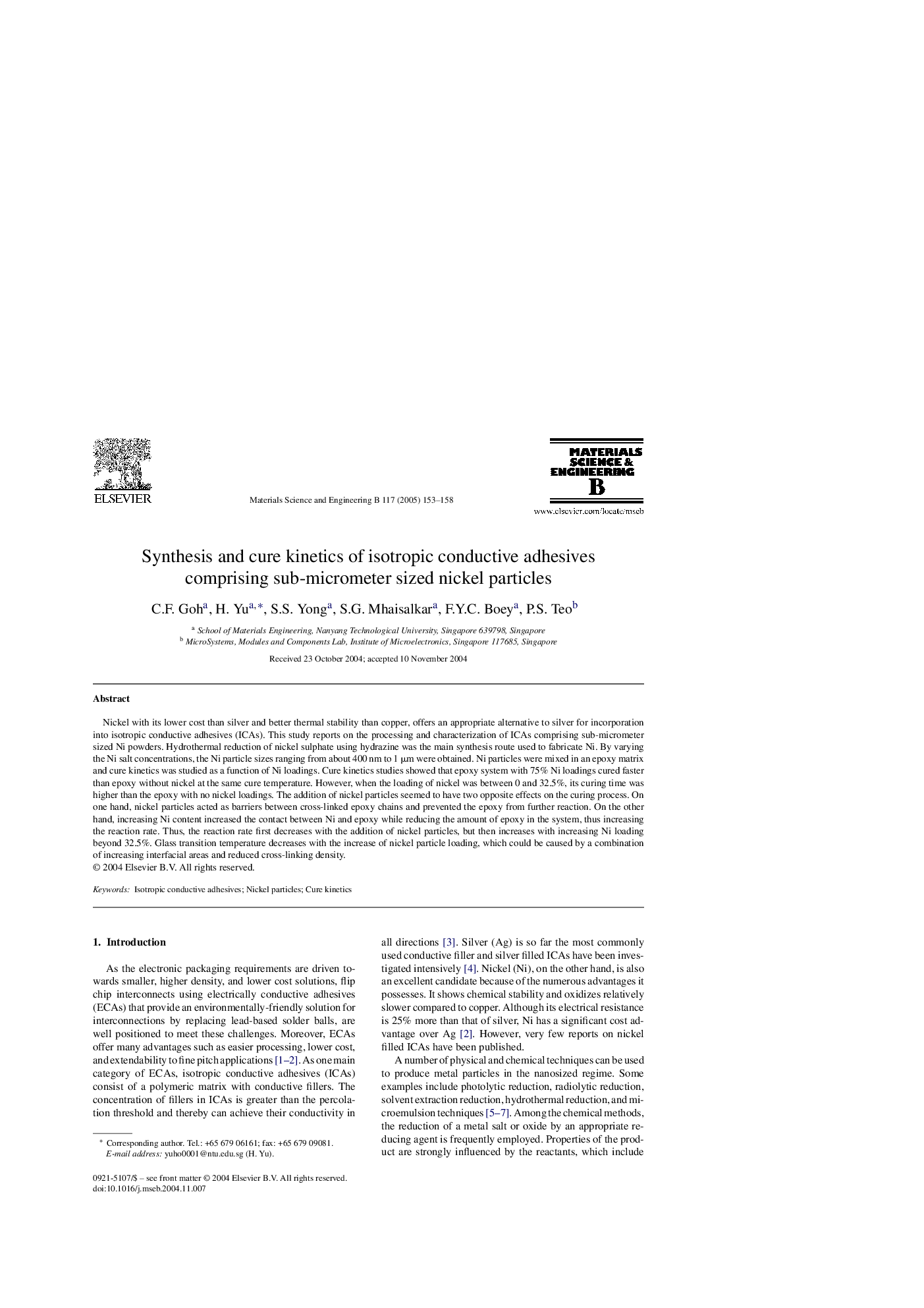| Article ID | Journal | Published Year | Pages | File Type |
|---|---|---|---|---|
| 10640058 | Materials Science and Engineering: B | 2005 | 6 Pages |
Abstract
Nickel with its lower cost than silver and better thermal stability than copper, offers an appropriate alternative to silver for incorporation into isotropic conductive adhesives (ICAs). This study reports on the processing and characterization of ICAs comprising sub-micrometer sized Ni powders. Hydrothermal reduction of nickel sulphate using hydrazine was the main synthesis route used to fabricate Ni. By varying the Ni salt concentrations, the Ni particle sizes ranging from about 400 nm to 1 μm were obtained. Ni particles were mixed in an epoxy matrix and cure kinetics was studied as a function of Ni loadings. Cure kinetics studies showed that epoxy system with 75% Ni loadings cured faster than epoxy without nickel at the same cure temperature. However, when the loading of nickel was between 0 and 32.5%, its curing time was higher than the epoxy with no nickel loadings. The addition of nickel particles seemed to have two opposite effects on the curing process. On one hand, nickel particles acted as barriers between cross-linked epoxy chains and prevented the epoxy from further reaction. On the other hand, increasing Ni content increased the contact between Ni and epoxy while reducing the amount of epoxy in the system, thus increasing the reaction rate. Thus, the reaction rate first decreases with the addition of nickel particles, but then increases with increasing Ni loading beyond 32.5%. Glass transition temperature decreases with the increase of nickel particle loading, which could be caused by a combination of increasing interfacial areas and reduced cross-linking density.
Related Topics
Physical Sciences and Engineering
Materials Science
Electronic, Optical and Magnetic Materials
Authors
C.F. Goh, H. Yu, S.S. Yong, S.G. Mhaisalkar, F.Y.C. Boey, P.S. Teo,
